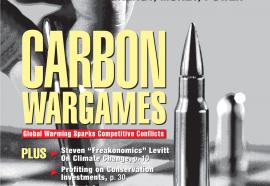PV vs. Solar Thermal
Distributed solar modules are gaining ground on concentrated solar thermal plants.
Photovoltaic technologies are beginning to appear more attractive than concentrated solar thermal plants. PV’s competitiveness is improving from technical and operational advancements, as well as significant commitments made by such utilities as Southern California Edison. In the long run, distributed central PV plants likely will gain a strong market position.








